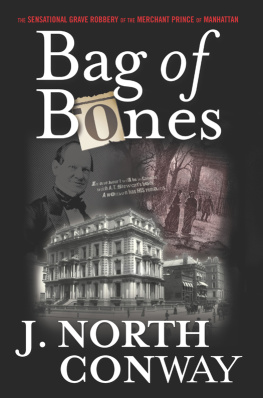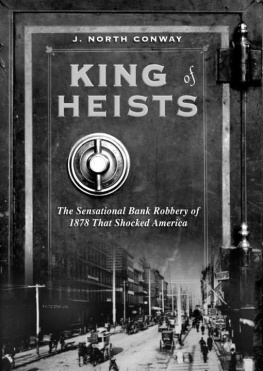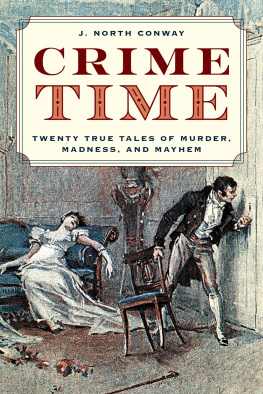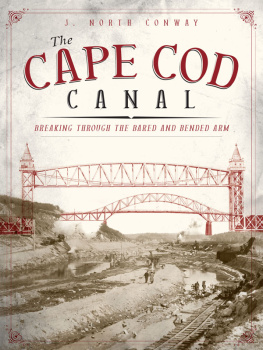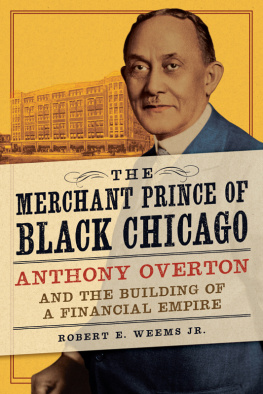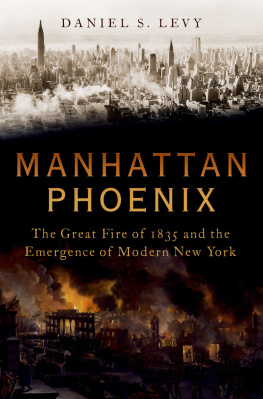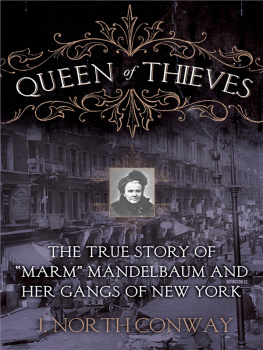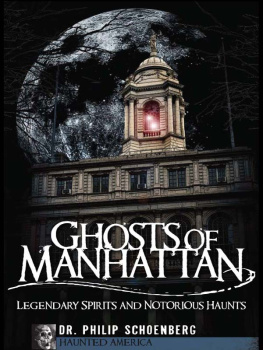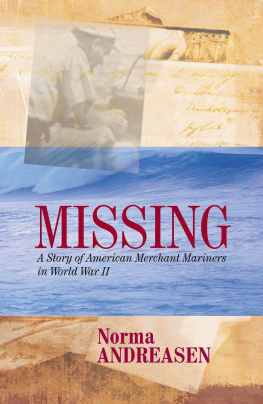J. North Conway - Bag of Bones: The Sensational Grave Robbery of the Merchant Prince of Manhattan
Here you can read online J. North Conway - Bag of Bones: The Sensational Grave Robbery of the Merchant Prince of Manhattan full text of the book (entire story) in english for free. Download pdf and epub, get meaning, cover and reviews about this ebook. year: 2012, publisher: Lyons Press, genre: Non-fiction. Description of the work, (preface) as well as reviews are available. Best literature library LitArk.com created for fans of good reading and offers a wide selection of genres:
Romance novel
Science fiction
Adventure
Detective
Science
History
Home and family
Prose
Art
Politics
Computer
Non-fiction
Religion
Business
Children
Humor
Choose a favorite category and find really read worthwhile books. Enjoy immersion in the world of imagination, feel the emotions of the characters or learn something new for yourself, make an fascinating discovery.
- Book:Bag of Bones: The Sensational Grave Robbery of the Merchant Prince of Manhattan
- Author:
- Publisher:Lyons Press
- Genre:
- Year:2012
- Rating:3 / 5
- Favourites:Add to favourites
- Your mark:
- 60
- 1
- 2
- 3
- 4
- 5
Bag of Bones: The Sensational Grave Robbery of the Merchant Prince of Manhattan: summary, description and annotation
We offer to read an annotation, description, summary or preface (depends on what the author of the book "Bag of Bones: The Sensational Grave Robbery of the Merchant Prince of Manhattan" wrote himself). If you haven't found the necessary information about the book — write in the comments, we will try to find it.
Bag of Bones: The Sensational Grave Robbery of the Merchant Prince of Manhattan — read online for free the complete book (whole text) full work
Below is the text of the book, divided by pages. System saving the place of the last page read, allows you to conveniently read the book "Bag of Bones: The Sensational Grave Robbery of the Merchant Prince of Manhattan" online for free, without having to search again every time where you left off. Put a bookmark, and you can go to the page where you finished reading at any time.
Font size:
Interval:
Bookmark:
BAG OF BONES
Also by J. North Conway
Nonfiction
The Big Policeman: The Rise and Fall of Americas First, Most Ruthless, and Greatest Detective
King of Heists: The Sensational Bank Robbery of 1878 That Shocked America
The Cape Cod Canal: Breaking Through the Bared and Bended Arm
Head Above Water
Shipwrecks of New England
New England Visionaries
New England Women of Substance
American Literacy: Fifty Books That Define Our Culture and Ourselves
From Coup to Nuts: A Revolutionary Cookbook
Fiction
The Road to Ruin
Zig Zag Man
Poetry
Life Sentences
My Picnic With Lolita and Other Poems
BAG OF BONES

The Sensational Grave Robbery of the
Merchant Prince of Manhattan
J. NORTH CONWAY

LYONS PRESS
Guilford, Connecticut
An imprint of Globe Pequot Press
Copyright 2012 by J. North Conway
ALL RIGHTS RESERVED. No part of this book may be reproduced or transmitted in any form by any means, electronic or mechanical, including photocopying and recording, or by any information storage and retrieval system, except as may be expressly permitted in writing from the publisher. Requests for permission should be addressed to Globe Pequot Press, Attn: Rights and Permissions Department, P.O. Box 480, Guilford, CT 06437.
Lyons Press is an imprint of Globe Pequot Press.
Text design: Sheryl Kober
Layout artist: Justin Marciano
Project editor: Kristen Mellitt
Library of Congress Cataloging-in-Publication Data is available on file.
ISBN 978-0-7627-7812-6
Printed in the United States of America
E-ISBN 978-0-7627-8513-1
This book is dedicated to my mother and father.
TABLE OF CONTENTS
Introduction
BONES OF CONTENTION
T he tale surrounding the theft and ransom of department store magnate A. T. Stewarts bodytold here in Bag of Bones would be magnificent fodder for todays cold case entertainment industry were the remains those of a contemporary man of Stewarts astounding wealth. But this crime took place long before co-ed detective units and lab-coat forensics. It remains one of Americas great and enduring mysteries.
Bag of Bones is the third and final installment of my trilogy about New York City during the Gilded Age. King of Heists (2009) told the story of the greatest bank robbery in American history, carried out in 1878 by George L. Leslie, dubbed King of the Bank Robbers. The Big Policeman (2010) details the career of Thomas Byrnes, a colorful, sometimes ruthless police officer who rose through the ranks to become superintendent of the New York City Police Department and who is credited as the father of American detective work.
Byrnes is a key player in the A. T. Stewart drama. He is the head cop in the investigation of the gruesome, sensational crime at the heart of the story. I think of the Stewart case as a classic whodunit, yet it weaves together elements of true crime, biography, and Manhattan history and culture, all set against New York Citys decadent social orderthe Gilded Age.
Running parallel to the grave-robbing narrative is the story of the Stewart familys rise and fall, and how the family fortune fared under the questionable stewardship of one of Stewarts most trusted friends, Judge Henry Hilton. Any reader will be quick to conclude that Bernie Madoff had nothing on Judge Hilton. The tragedy of A. T. and Cornelia Stewart serves as a cautionary tale, one that reinforces how vital study of the Gilded Age is to our understanding of contemporary American society. The Gilded Age was a term coined by Mark Twain and used as the title of a book he wrote with Charles Dudley Warner in 1873, The Gilded Age: A Tale of To-Day . It encapsulates a period in American history (18701890) of enormous greed, the accumulation of great wealth by the so-called robber baronspeople who made their great fortunes through ruthless and uncontrolled business practicesand the vulgar display of that wealth.
Gilded Age figures occupy the top tier of the list of the richest Americans in history according to both Forbes and the New York Times . Among them are John D. Rockefeller (18391937) , Americas first billionaire, ranked number one with approximately $190 billion by early twenty-first century currency standards, followed by Cornelius Vanderbilt (17941877), who was estimated to be worth about $140 billion, and John Jacob Astor in the number three spot at nearly $115 billion. Andrew Carnegie (18351919) reached sixth place, and A.T. Stewart (18031876), who is considered the father of the American department store, was in the seventh position. The Gilded Age yielded five of the top ten richest men in American history. During this period it was estimated that the richest 2 percent of the people owned one-third of the nations wealth, while the richest 10 percent owned three-quarters. If, as stated in the Sermon on the Mount, the meek shall inherit the earth, then the celestial courts will surely be clogged with litigation. According to Robert Frank of the New York Times , during the New Gilded Age of the 1990s and the early 2000s, todays rich barely hold a candle to the Gilded Age titans. This is partly a measure of the astounding wealth accumulated by Rockefeller, Vanderbilt, Astor, and Carnegie. Count A. T. Stewart among these notable Gilded Age billionaires.

At the time of his death in 1876, before Rockefeller had completed his ascent, Alexander Turney Stewart was considered the third richest man in America behind only Vanderbilt and Astor. He left his wife, Cornelia, an estate estimated at more than forty million dollars, a vast fortune that he had made in the retail sales business and that had earned him the title of the Merchant Prince of Manhattan.
An Irish immigrant, Stewart began his career in New York City in 1823, selling linens from the old country. By 1862, he had built the largest department store in the world, the Cast Iron Palace. Stewarts store was six floors tall and located on the corner of Broadway and Ninth Street. It had a cast-iron front and a glass dome skylight. The immense store employed more than two thousand people and had nearly twenty departments, selling everything from burlap bags to womens calf gloves. He later established department stores overseas, including in London and Paris.
In 1869, Stewart completed his ornate mansion on the corner of Fifth Avenue and Thirty-fourth Street in New York City. Unlike the other luxurious brownstone mansions owned by the Astors and Vanderbilts, all located along what was referred to as Millionaires Row, Stewarts was made entirely out of Italian marble, cut exclusively for him and shipped to the United States. Costing approximately two million dollars, it took seven years to build. Constructed in Parisian Empire design, the building had three main floors, an attic with a mansard roof, and a ballroom that ran the full length of its Fifth Avenue frontage. A lighted moat separated the residence from the sidewalks. Stewart filled the mansion with expensive furniture and antiques and a large and valuable art collection. There was no home like it in America.
Stewarts attempt to outdo his multimillionaire neighbors, like William and Caroline Astor, did not endear him to New York Citys powerful and affluent society. He and his wife found themselves ostracized by high class circles, viewed as millionaire upstarts. Still, their exclusion did nothing to damage his retail empire. Following the death of Cornelia Stewart in 1886, the Marble Mansion was sold, and in 1901 it was torn down.
Next pageFont size:
Interval:
Bookmark:
Similar books «Bag of Bones: The Sensational Grave Robbery of the Merchant Prince of Manhattan»
Look at similar books to Bag of Bones: The Sensational Grave Robbery of the Merchant Prince of Manhattan. We have selected literature similar in name and meaning in the hope of providing readers with more options to find new, interesting, not yet read works.
Discussion, reviews of the book Bag of Bones: The Sensational Grave Robbery of the Merchant Prince of Manhattan and just readers' own opinions. Leave your comments, write what you think about the work, its meaning or the main characters. Specify what exactly you liked and what you didn't like, and why you think so.

